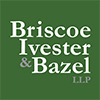 Some Pipes Are Not Point Sources: Supreme Court Upholds EPA Interpretation Of Stormwater Rule
Some Pipes Are Not Point Sources: Supreme Court Upholds EPA Interpretation Of Stormwater Rule
For the second time this year, the U.S. Supreme Court has concluded that not all pipes and channels are regulated by the Clean Water Act, even though the act regulates “point sources” and that term is defined as “any discernible, confined and discrete conveyance including … any pipe, ditch, channel [etc.]”. The Court’s decision, in the case of Decker v. Northwest Environmental Defense Center, is about pipes and ditches used to drain water from logging roads. Two regulations were at issue: EPA’s “Industrial Stormwater Rule”, which identifies stormwater discharges “associated with industrial activity” that are subject to regulation, and EPA’s “Silvicultural Rule”, which excludes from regulation “road construction and maintenance from which there is natural runoff.” One obvious issue in the Silvicultural Rule is the word “natural”. How can artificial structures like roads and drainage ditches generate “natural” runoff? Another issue is whether EPA has the authority to declare that some pipes and ditches are not point sources, when the Clean Water Act defines the phrase to include “any” pipe and ditch.
In 2011, the Ninth Circuit Court of Appeals concluded that EPA did not have authority to exclude the drainage pipes and ditches, and ruled in favor of the environmental group. The Supreme Court reversed. Justice Anthony M. Kenney, writing for a 7-1 majority, deferred to EPA’s interpretation of its own regulations. The majority applied the rule established by Auer v. Robbins, in which the Supreme Court had decided that a court must defer to an agency’s interpretation of its own regulations unless the interpretation is plainly erroneous or inconsistent with the regulation. This rule is sometimes referred to as “Auer deference”, and is related to Chevron deference, in which a court defers to an agency’s interpretation of a statute.
EPA had interpreted its rule as excluding stormwater from drainage pipes and ditches on logging roads. According to the majority, EPA’s interpretation was not plainly erroneous or inconsistent with the regulation, and the interpretation must therefore be enforced. The environmental group lost.
Justice Antonin Scalia was the only justice who would have ruled in favor of the environmental group. He argued that Auer should be overruled because it violates a basic rule of separation of powers: No person should be able both to make the rules and to interpret them. Auer deference, he said, encourages agencies to draft vague rules so that they can interpret them however the agencies like. Justice Scalia would have applied the most natural reading of the regulations. He concluded that the pipes are point sources notwithstanding the Silvicultural Rule, and that the Industrial Stormwater Rule regulated stormwater discharged from logging roads.
In January, the Supreme Court ruled against the environmental group in Los Angeles Country Flood Control District v. NRDC, which was about the pipes and channels used for flood control in the Los Angeles area. The State of California had issued a single NPDES permit to the flood-control district, the county, and 84 cities. That permit required monitoring in the Los Angeles River, which was long ago transformed from natural drainage into a trapezoidal, concrete-lined flood-control channel. The monitoring data showed that, during wet weather, water quality in the river was not in compliance with the water-quality standards applicable to the river. NRDC sued and argued that the flood-control district was liable. The flood-control district argued that it was not liable because it was responsible only for what was flowing out of its pipes into the river, and the data were only from the river itself—and therefore not representative of what was flowing out of any pipe.
The Ninth Circuit ruled in favor of NRDC, but its reasoning was obscure. It agreed that the flood-control district could be held liable only for what was flowing out of its pipes, and then proceeded to hold the flood-control district liable as though the data collected from the river were taken from one of its pipes. The flood-control district argued to the Supreme Court that the Ninth Circuit’s decision made sense only if the Ninth Circuit thought that the river itself was a pipe—a point source connecting the upstream and downstream reaches of the Los Angeles River. This conclusion was inconsistent, the flood-control district argued, with the Supreme Court’s decision in the case of South Florida Water Management District v. Miccosukee Tribe, which held that there is no regulated discharge when water is transferred from one place to another within the same body of water. The Supreme Court agreed, unanimously. Justice Ruth Bader Ginsberg wrote the opinion.
The Supreme Court did not decide a more interesting question, which Briscoe Ivester & Bazel asked in an amicus brief on behalf of the Western Coalition of Arid States (“WESTCAS”): When stormwater is discharged from the flood-control district’s sewers into the Los Angeles River, who is the discharger? Is it only the flood-control district (in which case none of the up-sewer industries and cities would need an NPDES permit), or does it include the industrial and municipal discharges who discharge through the flood-control district’s sewers (in which case the flood-control district would not be liable for the stormwater discharges of the up-sewer industries and cities)? We argued in the amicus brief that municipalities are not liable for the up‑sewer industries and cities that discharge stormwater through their pipes and channels. We also argued that the many non-municipal sources of bacteria may make it impossible for municipalities to achieve bacterial water-quality standards during wet weather.
These issues will undoubtedly arise again. The State of California has amended the flood-control district’s permit to require monitoring more specifically related to individual discharges. When the monitoring data comes in, NRDC will be watching.
Lawrence Bazel
Briscoe Ivester & Bazel LLP
155 Sansome Street, 7th Floor
San Francisco, CA 94104
Telephone: (415) 402-2700
Fax: (415) 398-5630